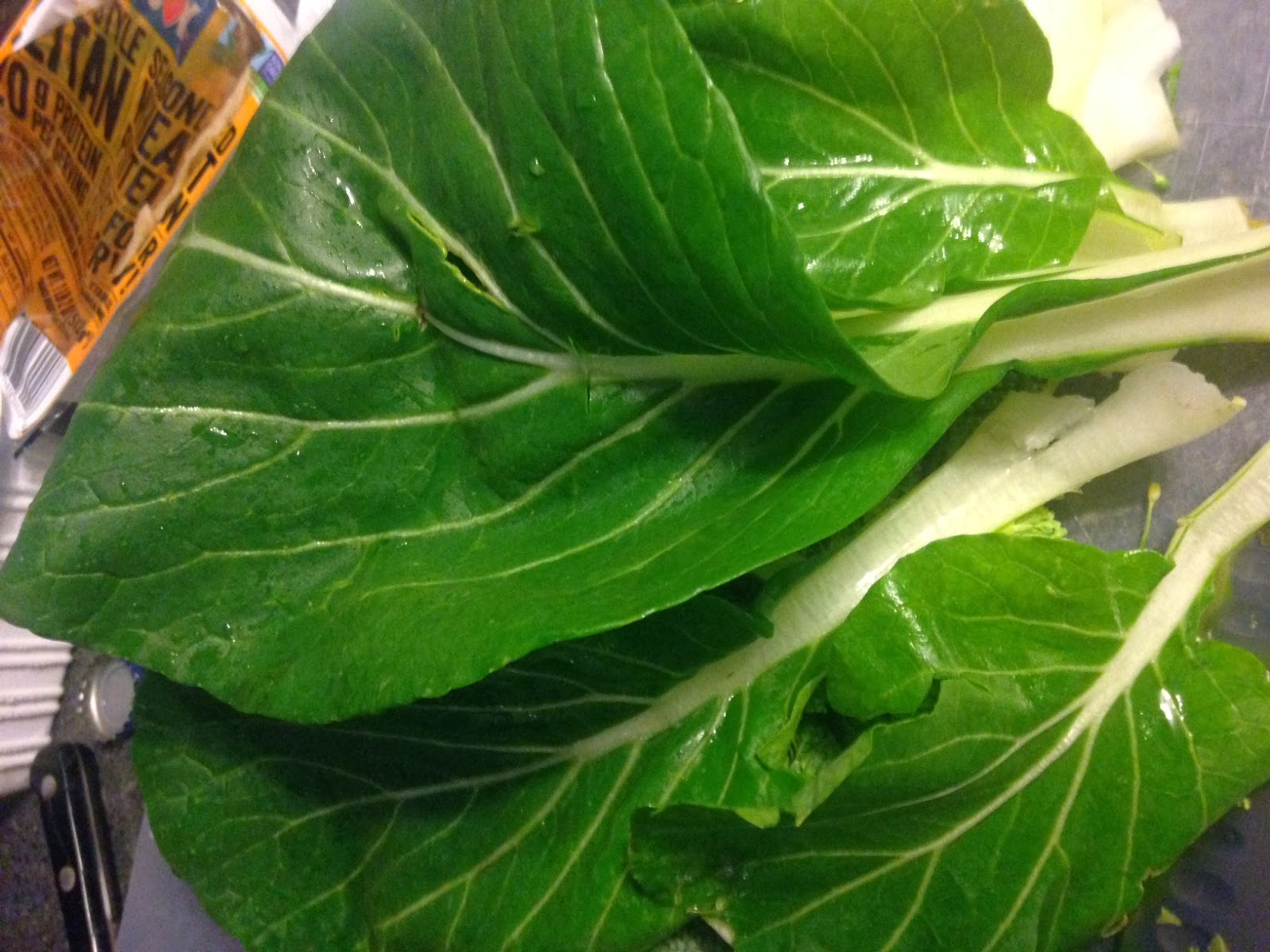 |
| The finished product ready to take to work for lunch |
There isn't much simpler than salad. At its most basic, it's leafy greens and raw vegetables. If you want to get fancy you can add cold vegetables- like peas, corn or even asparagus; a meat like cooked salmon, chicken or steak; fruits like apples, grapefruit or pomegranate; cubed or grated cheese and any combination of croutons, nuts, olives, artichokes, cooked pasta or anything else that is taking up space in your fridge.
All this can be packed into a container the night before for an easy lunch to take to work the next day.
It seems silly to give a recipe for salad but most people today think of salad as a bunch of iceberg lettuce with a few shreds and cabbage and carrot thrown in for color.
By comparison, salads from the garden include romaine, bibb, red garnet romaine, buttercrunch, oak leaf, rouge d'hiver and red sails lettuces along with arugula, baby mustard, kale, bok choi and swiss chard, malabar spinach, and french sorrel and every combination tastes a little bit different.
The only thing we don't have is iceberg.
On thing people often overlook in a salad is fresh herbs. Cilantro, basil, thyme, oregano and chives all add fresh flavor to otherwise boring assortments of leaves.
A tip on how to make a satisfying salad that I learned from a restaurant vet - don't forget the salt and pepper.
You don't serve any other dish without a healthy dose of salt and pepper and don't serve a salad without it either.
What you need
 |
| Red garnet romaine, baby mustard, cilantro and radishes- all from the garden |
20 leaves assorted lettuce
Pick the larger lettuce leaves from the bottom edge of the plant
5-10 leaves of baby kale and mustard
Choose young leaves from the inner parts of the plant- save the outer leaves for cooking. Also, mustard is a bit spicy - like horseradish - I like a lot of it but some might want less mustard in the mix
4 radishes
1 carrot
Broccoli
Cheddar cheese
What you do
Wash the lettuce, greens and vegetables in a tub of water
Spin them dry and rough chop them
Cut the radishes and carrots into rounds
Cut as much broccoli as you want into small florets
Cube the cheese
Mix everything together and sprinkle with fresh ground pepper and salt
Toss and serve















